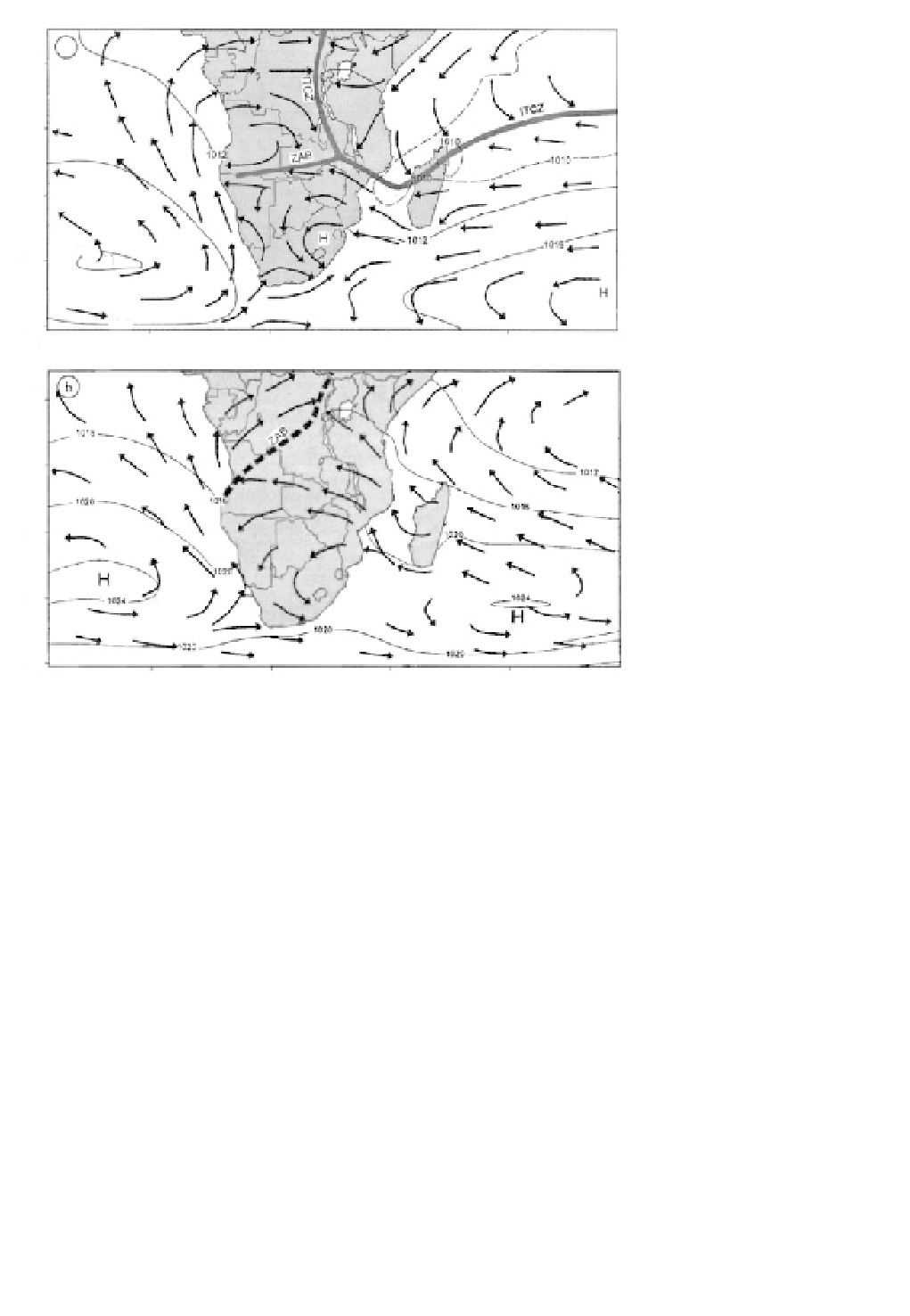Geoscience Reference
In-Depth Information
Figure 11.45
Mean SLP (mb) over
the sea, based on daily ECWMF
analysis for 1985 to 1992 (A) summer
(JJA) and (B) winter (DJF) mean flow
lines on sea and land. Thick solid lines
in summer represent the ITCZ and
Zambian air boundary (ZAB). Broken
thick line in winter is the mean ZAB
between the dry continental southeast
trade winds and the moist southwest
monsoon air.
Source
: Van Heerden and Taljaard
(1998).
A
EQ
10S
1010
1012
1010
1010
20S
H
1012
1016
1020
30S
H
H
1016
40S
20W
0
20E
40E
60E
80E
B
EQ
1016
10S
1012
1016
1020
1016
20S
1020
1020
H
30S
1024
1024
H
1020
1020
1020
40S
20W
0
20E
40E
60E
80E
broader features of the global circulation. Above-normal
rainfall, occurring as a north-south belt over the region,
is associated with a high-phase Walker circulation (see
p. 302). This has an ascending limb over southern
Africa; a strengthening of the ITCZ; an intensification
of tropical lows and easterly waves, often in conjunction
with a westerly wave aloft to the south; and a strength-
ening of the South Atlantic subtropical high-pressure
cell. Such a wet spell may occur particularly during the
spring to autumn period. Below-normal rainfall is
associated with a low-phase Walker circulation having
a descending limb over southern Africa; a weakening of
the ITCZ; a tendency to high pressure with a diminished
occurrence of tropical lows and easterly waves; and
weakening of the South Atlantic subtropical high-
pressure cell. At the same time, there is a belt of cloud
and rain lying to the east in the western Indian Ocean
associated with a rising Walker limb and enhanced
easterly disturbances in conjunction with a westerly
wave aloft south of Madagascar.
F AMAZONIA
Amazonia lies athwart the equator (Figure 11.46) and
contains some 30 per cent of the total global biomass.
The continuously high temperatures (24 to 28°C)
combine with the high transpiration to cause the region
to behave at times as if it were a source of maritime
equatorial air.
Important influences over the climate of Amazonia
are the North and South Atlantic subtropical high-
pressure cells. From these, stable easterly mT air
invades Amazonia in a shallow (1000 to 2000 m),
relatively cool and humid layer, overlain by warmer and
drier air from which it is separated by a strong tem-
perature inversion and humidity discontinuity. This
shallow airflow gives some precipitation in coastal
locations but produces drier conditions inland unless it
is subjected to strong convection when a heat low is
established over the continental interior. At such times,
the inversion rises to 3000 to 4000 m and may break









